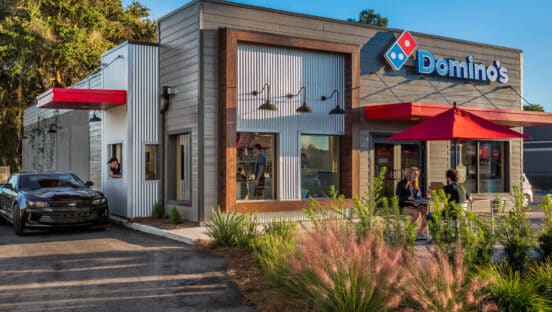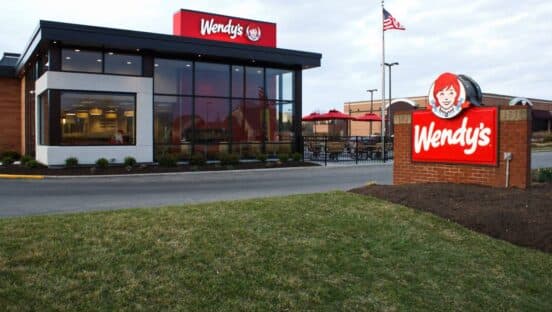The coronavirus outbreak—and the devastation it wreaked on the restaurant business—revealed many things to restaurant operators about how healthy their organizations were in normal times. Those companies that couldn’t quickly pivot to an exclusively off-premises business model and aggressive promotion strategy were the first to fade and even close up shop.
One problem for many restaurant companies was they had no easy way to communicate personally with their loyal customers, and therefore couldn’t get the word out about any service changes, deals, or discounts. But one industry expert says operators still have time to enhance this part of their business so that they’re positioned to thrive once coronavirus subsides—and so that they’re prepared for any future crises.
Zachary Goldstein is founder and CEO of customer relationship management (CRM) platform Thanx, which works with several restaurant companies to personalize their loyalty and ordering experiences. Speaking in mid-March, Goldstein was optimistic that restaurant traffic would bottom out and slowly climb back to more regular levels as consumer trust in the food system was restored. But even as that happens, it likely won’t include dine-in business, at least for the short term.
“That’s going to make off-premises consumption, digital, and the ability to run personalized communications to your customers that represent a large portion of your revenue … critical muscles for restaurants to be focused on,” he says.
The full-service category, of course, suffered more from the outbreak than did limited service, mostly because those restaurants were so dependent upon a dine-in experience. While some full-service brands got creative with meal kits, subscription services, and gift-card solutions as a way to bring dollars in even while their dining rooms were closed, it was impossible for many of them to communicate those special deals to customers because they hadn’t already built a robust CRM platform.
There’s a lesson in that for restaurant operators who aren’t prepared to talk directly and personally with their regular guests.
“This is where the [brands] that seemingly invested ahead in customer databases, CRM, and loyalty are having a little bit more success, because they have a direct channel to their customers and can tell their customers, ‘Hey, this is a totally different way of consuming our food than you’ve experienced before,’” Goldstein says. “They are seeing more success than the ones that have no direct channel to customers and previously relied on word of mouth, location, and consistency of experience. It’s a lot harder to communicate that you’re now open for pre-packaged meal pickups when the consumer has never thought of you that way.”
Personalization is also key to strong communication with customers. Goldstein says the days of blanket, untargeted messages to thousands of consumers in your trade area are long gone. Instead, restaurants should carefully tailor their promotions around what they already know about their regular guests—for example, they should send one message to guests who order primarily via digital channels and another to those who more often dine in. Personalized offers have a four to 10 times higher engagement rate than those that are generic, he adds.
A perfect example of how this can save a business is Chipotle. The Mexican fast casual struggled mightily in the aftermath of an E. coli outbreak in late 2015, and the various messages and promotions it rolled out immediately after the food-safety incident failed to right the ship. Goldstein recalls receiving a mailer from Chipotle that was addressed to “valued customer”—the opposite of a personalized message.
But after Brian Niccol was hired as CEO in early 2018, the company redirected its efforts to be more focused on digital ordering and a loyalty and CRM program. “And over the last couple of years, those two initiatives have been the No. 1 drivers of their growth,” Goldstein says.
Even though restaurant operators today are just trying to keep their heads above water, they should also be thinking about the long-term and what their companies will look like in a post-coronavirus world. Brands should understand where their revenue is coming from and capture data around it, he says, and they should also own their digital channels rather than be dependent on third-party platforms that won’t relinquish valuable data.
“As hard as hard as it is to think about spending energy and money focused on technology and digitization, we’re going to see a new normal on the other side of this crisis,” he says. “That’s a necessity now especially given that we don’t know how long demand will be depressed or people will be hesitant to walk into restaurants.”
And restaurants especially shouldn’t make short-sighted decisions. Goldstein points to one restaurant he frequents that put a temporary stop on customers using loyalty points they’d already accrued—a decision, he says, that will likely cost it loyal guests in the long-term, even if it might help it with cash flow in the short-term.
“You really need to focus on being positioned to gain on that upswing, because that’s when winners and losers will be defined,” Goldstein says.
There are silver linings to the challenges posed by coronavirus. Goldstein says the restaurant industry was already well on its way to a more digital reality, where customers have more options in purchasing food in ways other than visiting the restaurant, and where brands have more data at their fingertips available to help personalize promotions to guests.
“This is just going to further accelerate some of that investment in modern technology and in the digitization of restaurants,” he says. “And that’s not a bad thing long-term for restaurants, even though this is a little bit—or a lot bit—of a more painful route to getting there than we would have liked to see.”
For more from Goldstein on how brands can prepare their communication platforms for life after coronavirus, stream the podcast above.











